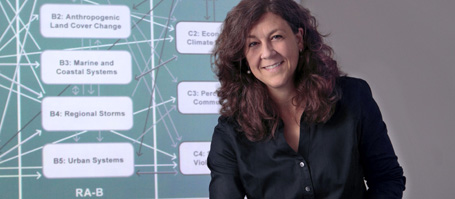The low percentage of women – especially in leading positions – and the limited number of measures planned to involve more female researchers are two aspects the international review committee recognised as major problems of the early Excellence Initiative.
The project team of Anita Engels conducted a survey with a majority of the clusters of excellence and graduate schools, which were successful in the first round of the Excellence Initiative. Some had also participated in an in-depth study, amongst them the Future Ocean. In the following interview, Anita Engels summarizes some of the main project findings and looks into a future where German universities have established a culture of gender equality.
According to your study, what are the main impacts of the Excellence Initiative on gender equality in cutting edge research?
The external pressure to take gender equality more seriously has led to a much higher visibility and also legitimacy of this topic in internal university processes. Many Excellence Institutions have experimented with innovative measures and have gained experience in this field. Overall, we have observed a professionalization of gender equality as a new task for management. The most visible impact is the impressive rise of female scientists among the so-called Principal Investigators: their share has almost doubled from around 11% to more than 21% between 2006 and 2011. However, this is in many scientific disciplines still far from a critical mass, and I see a risk that without continued external and internal pressure, we will see these numbers drop again in the next round. Another important impact has been an intensified debate on the general work culture and the problematic aspects of the academic career track in the German higher education system.
Your study has shown that many female scientists do not want to fight for power and high-ranking visible positions in science. Do you have any suggestions to overcome this tendency which hinders a change of representation and possibilities of shaping and influencing the ways science and leadership are carried out?
I would not say that these young women do not want to fight for power, but many would prefer to stay on safe ground by dealing with research-related questions only. We have shown in our book that leadership in academia is not gender neutral, and that power fights often involve masculine ways of interacting with each other. Positive and powerful personality attributes are often associated with masculinity. Training, encouragement and mentoring can probably help to a certain degree. However, the deeply rooted cultural structures cannot be easily changed by a few technical measures. The most important way to overcome this situation is to have more women in leading positions. We have seen in many cases that external pressure creates a situation in which search committees suddenly manage not only to find excellent women candidates but also to hire them. It is much too early to lean back and look satisfied at the few changes which have been reached in the past ten years of the Excellence Initiative.
From your findings, how do you envision the university of the future which implements equal opportunities for women and men in academia?
There is not only one prototype of the university of the future, which would excel in terms of equal opportunities. It will be important that each university - represented by its leaders and by the heads of faculties and departments - starts from a realistic analysis of its own gender situation. In which scientific fields do women leave the academic career track, and at what stage of the career do they typically get lost here at our university? What are the main reasons for women leaving this university at disproportionately high rates? What has the university offered so far to change this, and how have the available measures been evaluated? Many factors can create very specific framework conditions for improving gender equality: The internal composition of disciplines, the predominant work culture, the availability of resources or the location of the university, both geographical and in terms of the conditions offered by the different federal states. Furthermore, the available networks with nearby academic and business institutions can also play a role in creating equal opportunities for women and men in science.
Contact:
Ruth Kamm, E-Mail: rkamm@gb.uni-kiel.de
…


